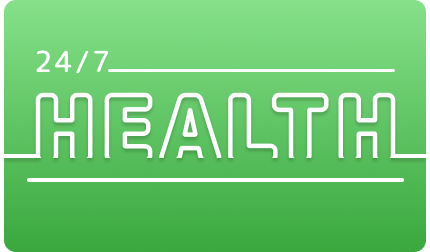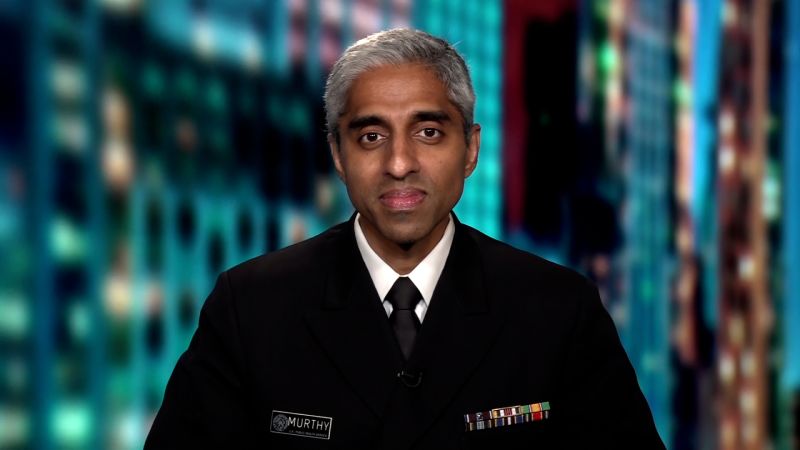When US Surgeon General Dr. Vivek Murthy pushed last week for a tobacco-style warning on social media, he called the mental health crisis in young people an emergency that demanded action without waiting for “perfect information.”
Even among experts, questions remain about the exact role that social media plays in the mental health of children and teens. Authors of a sweeping new review of research into social media and mental health say there’s still key information missing to know whether prevention programs and interventions will work.
In the study, published Monday in the medical journal JAMA Pediatrics, researchers reviewed nearly 150 studies on the relationship between social media and the mental health of adolescents. They found an overall link between anxiety and depression in adolescents and the time spent on social media platforms, as well as a link between the types of activities and content they were interacting with. However, the level of impact varied enough to suggest that the findings shouldn’t be generalized to the population as a whole.
The researchers found that very few studies assessed the relationship between social media use and adolescents who were experiencing mental health symptoms at clinical levels — where they’re seeking health services or have an active diagnosis, for example — which further clouds the findings.
There’s a “real risk that we are incorrectly generalizing results from the general population to young people with mental health conditions,” wrote the study authors, from the University of Cambridge in the United Kingdom and Stellenbosch University in South Africa.
“In a world increasingly saturated by digital technology, we cannot afford to design prevention programs, interventions, and regulations without knowing that they work for everyone, especially those who are most vulnerable.”
Another analysis of existing research, published by National Academies of Sciences, Engineering, and Medicine in December, also highlighted key questions that remain to be answered.
“There is not enough evidence to say that social media causes changes in adolescent health at the population level,” according to a news release from the independent organization about the report. And “despite many years of research, the evidence clarifying precisely how social media influences health is limited.”
While the science suggests there is a link between social media and mental health, there is often a lack of clarity on whether social media is influencing an individual’s mental health or whether an individual’s mental health is influencing their use of social media, said Dr. Sandro Galea, chair of an ad-hoc National Academies committee that authored the analysis of research and dean of the Boston University School of Public Health.
Future research should focus on following trends over time – tracking the mental health of the same children before and after exposure to social media to see what effects it has – and digging in on more specific measures that capture how social media is used, he said.
For Murthy, the urgency of the youth mental health crisis is dominant — and there’s enough evidence to act now. In a New York Times op-ed, Murthy advocated for a warning label that would “regularly remind parents and adolescents that social media has not been proved safe” among other interventions.
Murthy cited two key reports in support of a warning label: one study from 2019 that found that adolescents who spent more time on social media faced increased risk for anxiety and depression and one survey from 2022 in which nearly half of adolescents said that social media makes them feel worse about their bodies.
“One of the most important lessons I learned in medical school was that in an emergency, you don’t have the luxury to wait for perfect information. You assess the available facts, you use your best judgment, and you act quickly,” Murthy wrote in his essay. “The mental health crisis among young people is an emergency — and social media has emerged as an important contributor.”
Public health often lacks ‘perfect’ data
Many experts agree that the surgeon general is starting an important conversation and that the need for more information shouldn’t lead to passiveness, but a social media warning label will require nuance in language and implementation. It will also require Congress to act to make it a reality.
“The Surgeon General is identifying something that he sees as a challenge to the health of the public and thinking about ways to act to mitigate the challenge. Through that lens, I think he’s doing exactly what a surgeon general should do,” Galea said. “Public health action, not infrequently, has to happen absent complete or perfect data.”
The National Academies committee specifically recommended against a social media ban. Despite potential harms – such as unhealthy social comparisons and distracting from other important healthy behaviors such as sleep, exercise and studying – social media can also benefit young people by helping to foster connection with friends and family, and with online support communities.
But there is an important distinction between benefits and safety, Murthy said Friday on The Daily, a podcast from the the New York Times.
“It’s important to look at the research question broadly. What we’re trying to understand first and foremost is the answer to the question parents are asking us, which is, ‘Is social media safe from my kids?’ And if you ask researchers, ‘What does data tell us about safety? Where is the data that tells us these platforms are safe?’ That data is not there. So there’s not evidence of safety. There is growing evidence of harm,” he said.
“There are certain benefits, but getting some benefits does not justify forcing kids to endure significant harm.”
Still, social media is not the same as cigarettes. Smoking has a much stronger and more direct link with negative health effects, and cessation is not the end goal with social media.
Instead, a social media warning label should be more like those on bicycles and motor vehicles, said Pamela Wisniewski, an associate professor in human-computer interaction at Vanderbilt University, whose research has focused on the relationship between social media, privacy, and online safety for adolescents.
“The key is to focus on solutions that empower youth and give them choices and opportunities to maximize the benefits of social media use, while minimizing risks, as opposed to taking restrictive and surveillance-based approaches that are heavily rooted in fear,” she said. The goal should be to ensure proper use, not just focus on the risks and harm.
There is an expectation that products children interact with are tested for safety, and a warning label on social media could deliver a clear message that there are “a lot of safety gaps,” said Dr. Jenny Radesky, co-medical director of the American Academy of Pediatrics Center of Excellence on Social Media and Youth Mental Health.
“We expect that infant formula is tested for bacteria, toys are tested for lead paint, and that there are rules about safety for everything from cribs to cars. These safety guardrails that prioritize children’s well-being in digital products do not exist in the US,” she said.
Still, warning labels are brief and nuance can be lost in the “noise of the internet,” Radesky said. “Family conversations to support healthy media use take a long time and need to happen over and over.”
For the surgeon general, a warning label is part of a holistic strategy to reduce the risks that social media poses to young people in the US. Systematic design changes by the platforms and legislation to support those changes remain the priority.
“To be clear, a warning label would not, on its own, make social media safe for young people,” he wrote. “These harms are not a failure of willpower and parenting; they are the consequence of unleashing powerful technology without adequate safety measures, transparency or accountability.”





